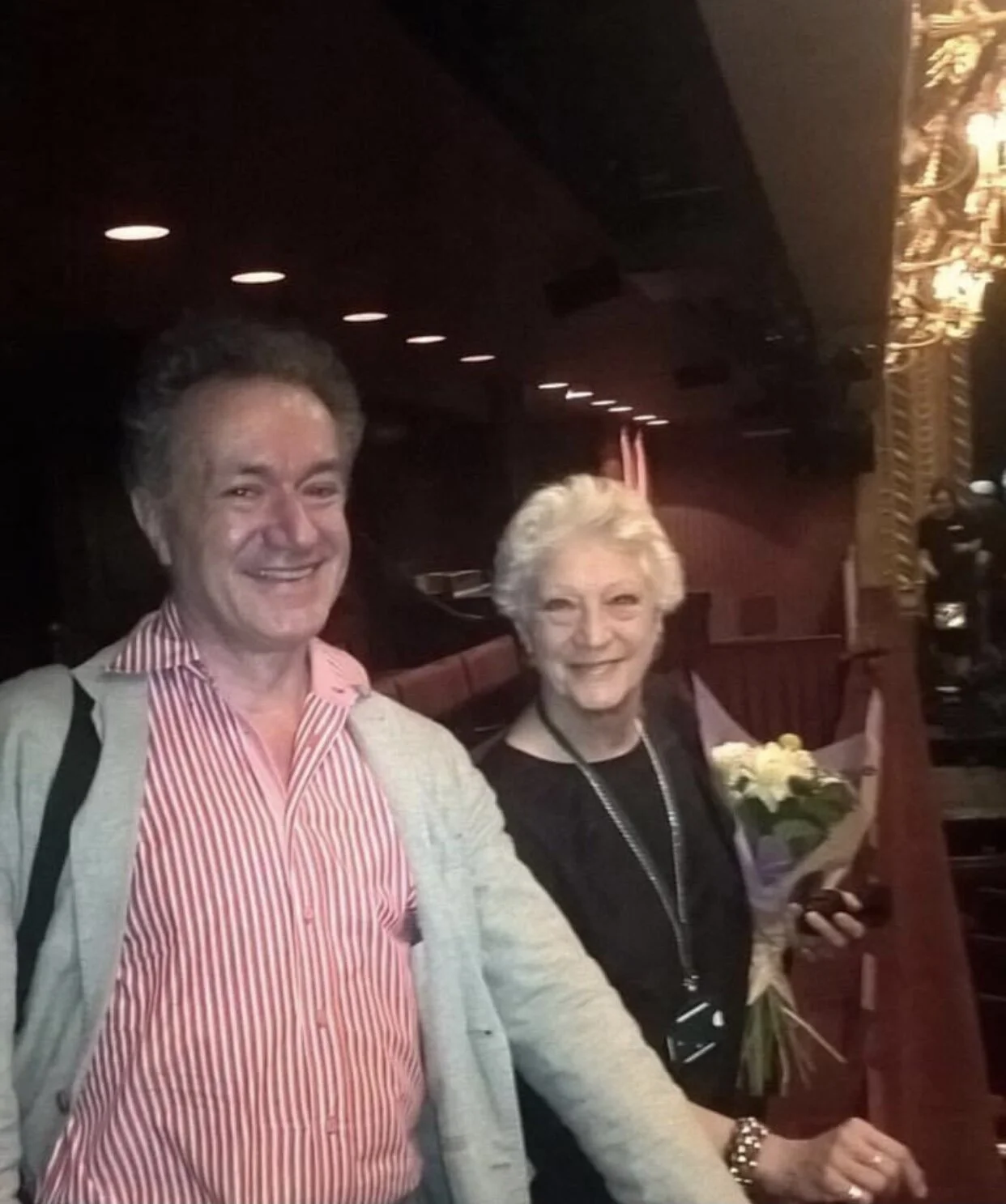On the eightieth birthday of Monica Mason
Many happy returns of the day to Monica Mason. Former director of the Royal Ballet, she is Dame Monica to many, and/or Mon to many too. I simply know her as Monica, but the pleasure of knowing her goes deep. She speaks ill of nobody, but she often tells stories against herself; she delights in recounting admiring and revealing tales of Ninette de Valois, Frederick Ashton, Robert Helpmann, Jerome Robbins, Margot Fonteyn, Michael Somes, John Tooley, Kenneth MacMillan, Svetlana Beriosova, Nadia Nerina, Norman Morrice, and others. Early in her life, the Royal Ballet became her family: she loves to speak of it and its repertory, always with intelligence and affection. I have interviewed her for at least eight oral-history interviews, each two hours long (this photo was taken after one at Covent Garden) and two newspaper interviews, I’ve worked with her on the preparations for conferences on Ashton, Fonteyn, and MacMillan, and - just this year - have chaired two Zoom panels (one on Tamara Karsavina, one on Fonteyn), in both of which she spoke with feeling, sense, acumen, and detailed recall. She has a life outside dance: I’ve bumped into her in both the National Theatre and the National Theatre, and I’ve enjoyed conversations arising.
She was my first Odette-Odile in 1975; her Siegfried was Rudolf Nureyev. I watched her five other times as Odette-Odile, up to 1980; I also saw her in many other roles - as Myrtha in Giselle, Nikiya in the Shades scene of “La Bayadère”, both the Lilac Fairy and Carabosse in The Sleeping Beauty, the Czardas in Swan Lake (in her forties), both the Mazurka and Prelude in Les Sylphides, a definitive Fokine Firebird (coached by Fonteyn, whose coaching she in turn has passed on for over forty years), the Hostess in Les Biches and the lead Bridesmaid in Les Noces, as Polyhymnia in Apollo, leading the Russian Dance in Serenade, as Webster in A Wedding Bouquet, as both Fairy Winter and the Fairy Godmother in Cinderella, in Ashton’s Sylvia pas de deux and in the Nerina variation of Birthday Offering, in Violette Verdy’s role in Liebeslieder Walzer, as the Chosen Maiden in MacMillan’s The Rite of Spring (the heroic role created for her at age twenty), as Lady Capulet in Romeo and Juliet, as the heroine of Song of the Earth, leading the third movement of MacMillan’s Concerto, as Lady Elgar in Enigma Variations, dancing the main female solo in Dances at a Gathering, as Kschessinska in Anastasia, in Hans van Manen’s Adagio Hammerklavier, in the Calliope Rag in Elite Syncopations, as Lescaut’s Mistress in Manon, Summer in The Four Seasons (the last three were all created on her by MacMillan), as the Midwife in Rituals (the last four were all created on her by MacMillan in two years), as both Empress Elisabeth and Mitzi Caspar in Mayerling, as Nursey in Isadora…. I dare say others too; but I am often aware of the great roles in which I missed her - Ballet Imperial, In the Night, and more.
I will cite just two of the stories she loves to tell. In 1958, she was taken into the Royal Ballet at Covent Garden, the youngest member it had had at that theatre. Arriving late her first day, she found she had missed class. The ballet mistress, Jill Gregory, introduced herself immediately (“I’m Jill”), and told her the time of morning class the next day. Ashton was choreographing Ondine, and at once incorporated her and another young dancer into the divertissement he was making for Act Three. Ascertaining that they were both Cecchetti students who knew the eight directions of the body and the various kinds of ronds de jambe à terre, he set them to work on helping to make phrases in space: she could not believe her luck. She arrived on time for the next day’s class, taking her place at one end of a barre, not knowing that Fonteyn, then the world’s most famous dancer, liked to arrive a few seconds after the start of class and to take her place at the end of that barre. As Fonteyn began to do pliés and tendus, immediately before her, Mason, standing behind her, again marvelled at her luck: “How much there is for me to learn - the poise of that neck, the beauty of those arms, the angles of the head!” Mason carries on, with a wry darkening of her voice: “And then we had to turn round!”
When, at short notice, she became director of the Royal Ballet in 2002, she summoned the company archivist and said she would like, for her office wall, one photograph of Ninette de Valois, one of Frederick Ashton, and one of Kenneth MacMillan. In one interview in that office, she pointed at those three photographs, saying “I have conversations with them! And I decide what they tell me.” She knew perfectly well that she was nicknamed “Safe Pair of Hands” when she first took over the company; but she laughed in 2012 when she commissioned Wayne McGregor to present Carbon Life, a ballet celebrating pop, punk, and fashion, with musicians onstage including Boy George, Hero Fisher, and Alison Mosshart. After that, she came back to her office, asked the three portraits “NOW do you think I’m a safe pair of hands?”, and laughed. When she can, as in these two stories, she takes recourse to humour, itself a part of Royal Ballet tradition, too.
Monday 6 September

